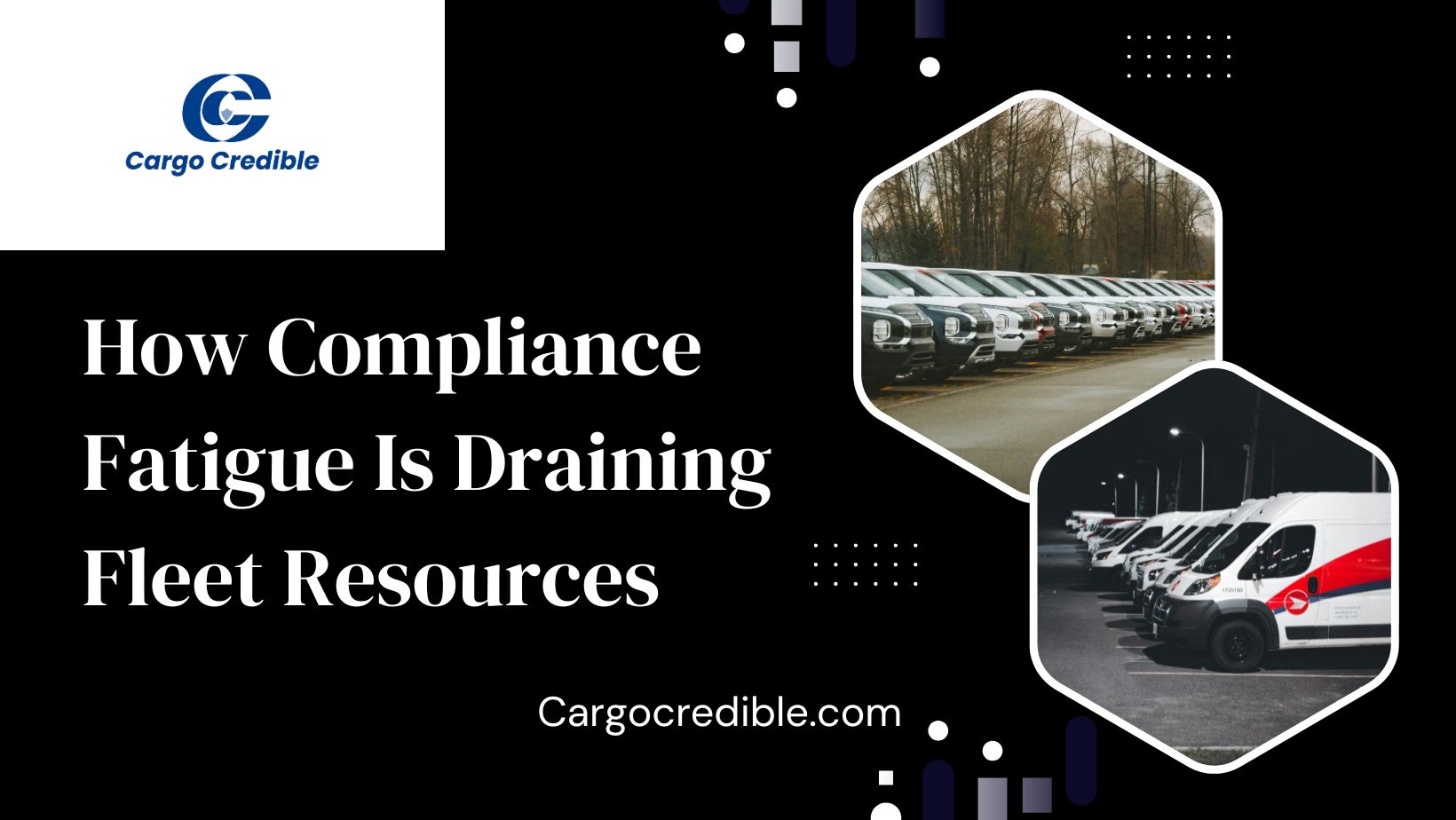How Compliance Fatigue Is Draining Fleet Resources

Running a busy trucking fleet sounds straightforward: trucks moving along highways, drivers keeping safe and on schedule, and office teams managing dispatch, maintenance, and customer communications. But in reality, fleet operators are often hit with new compliance updates—federal rules, revised reporting formats, new device requirements—that demand more time, training, and money to manage. This growing burden is called compliance fatigue, and it's silently draining fleets across the country.
What Is Compliance Fatigue?
Compliance fatigue happens when fleet owners, drivers, and managers feel worn out trying to keep up with an ever-growing mountain of rules and regulations. It’s like playing a game where the rules never stop changing. Even the most organized teams become tired, confused, and stretched thin as new mandates keep piling up.
The Mountain of Mandates
Over the past decade, trucking has faced waves of new compliance requirements. Each rule alone seems reasonable, but together, they form a towering challenge:
- ELDs (Electronic Logging Devices): Automatically track driver hours.
- HOS (Hours of Service) rules: Strict limits on driving time.
- Drug and alcohol clearinghouse checks: Verify driver eligibility.
- CSA scores and safety audits: Monitor carrier safety performance.
- Insurance mandates and varying state rules: Often change and overlap.
All these regulations aim to improve safety and accountability, yet managing them simultaneously causes cracks to appear in fleet operations.
The Hidden Costs: Where the Money (and Energy) Goes
Compliance fatigue hits fleets in ways that aren’t always obvious on financial reports:
1. Training and Retraining
Every new rule requires time to read, understand, and teach. This means time off the road and hours spent in training sessions, multiplying costs exponentially across drivers and staff.
2. Technology Overload
From ELDs to telematics and safety apps, each system demands separate logins, updates, and maintenance. When these tools don’t integrate, staff spend valuable time manually syncing data across platforms.
3. Administrative Burden
Compliance means proving compliance. That means endless paperwork, chasing signatures, fixing logs, and preparing for audits. Office personnel can spend hours, even days, buried in records.
4. Driver Burnout
Drivers not only need to drive safely but now also manage data entry and multiple alerts. This added pressure often leads to frustration, distraction, and higher turnover rates.
5. Financial Pressure
Every compliance change costs money—in hardware, subscriptions, training, and downtime. For smaller carriers, these expenses can be the difference between survival and shutdown.
Scattered Mandates, Scattered Focus
This patchwork forces fleets to constantly shift focus among multiple sets of requirements. It’s like trying to steer a truck with five steering wheels—each turning in a different direction.
The Hidden Pressure Beneath the Surface
Beyond trucks and drivers, an invisible web of rules keeps the industry running—but at what cost?
Fleet owners live with:
- The fear of costly non-compliance penalties.
- Rising insurance premiums linked to safety scores.
- Constant pressure to adopt “one more new system.”
- Mental exhaustion from always feeling behind.
This silent stress not only affects operations but takes a heavy toll on the people who keep fleets moving. When compliance consumes everyone’s time and energy, productivity, morale, and profits all suffer.
Beyond the Broken Axle: The Silent Drain Killing Your Fleet’s Profits
Compliance fatigue is the slow, hidden threat to your fleet—far more damaging than a broken axle or a delayed shipment. It drains time, money, and your most valuable asset: your people.
The “Drain Pipes”: Where Your Resources Are Disappearing To
The Time Drain:
ELDs and HOS rules add layers of digital recordkeeping and mental puzzles that take drivers and dispatchers away from moving freight.
The Money Drain:
Costs pile up—hardware, software subscriptions, training sessions, and fines for small errors. These recurring expenses act like a stealthy compliance tax.
The People Drain:
Drivers feel micromanaged and undervalued, leading many to quit. Managers face relentless pressure to stay compliant, resulting in burnout and turnover.
Fighting Compliance Fatigue: Turning Fatigue Into Focus
Compliance fatigue isn’t unsolvable. Fleets can shift from scrambling with every new rule to managing compliance smartly and proactively.
- Simplify Your Systems: Use integrated platforms that combine ELDs, dispatch, maintenance, and safety data on one dashboard.
- Train Smarter, Not Harder: Provide short, focused training refreshers explaining why rules exist, improving understanding and buy-in.
- Designate a Compliance Champion: Assign a dedicated person or team for compliance accountability and consistency.
- Leverage Automation: Automate reporting and document storage to save hours and reduce errors.
- Stay Ahead, Don’t Play Catch-Up: Subscribe to industry alerts to prepare for new requirements gradually.
The Final Mile
Compliance fatigue is the invisible weight dragging down fleets. The rules will keep coming and evolving. The difference lies in whether fleets let those rules drain vital resources or build smarter, more resilient operations to absorb the pressure. The fleets that thrive will be those who streamline compliance, empower their teams, and reclaim their focus on growth—not paperwork. Less red tape. More road time. Because every minute spent buried in compliance is a mile not driven toward success.
Comments (0)
- No comments yet.